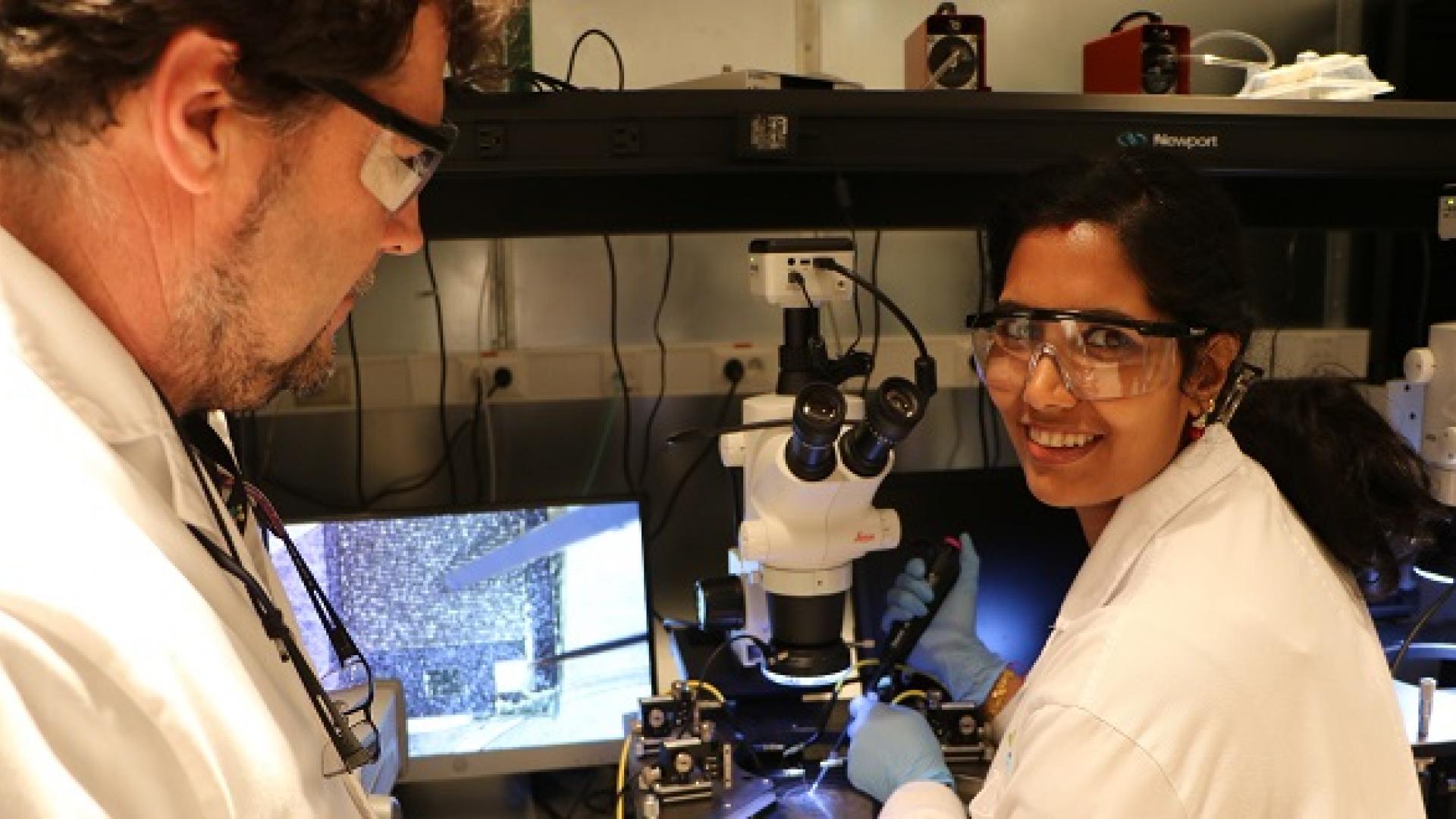© 2015 KAUST
A flexible device that can be used as a biosensing tool has been developed by researchers at KAUST.
The low-cost method for manufacturing the tool involves sputtering a 600-nanometer layer of gold on to a small sheet made of a common plastic known as polyethylene terephthalate (PET). The gold layer is etched by laser to make parallel gold electrodes across the PET surface. The sheet is then coated to insulate and protect it from moisture. This gold interdigitated electrode array (IDE) was made in an inexpensive setup without the use of clean room facilities.
Antibodies specific to C-reactive protein (CRP), a protein made in the liver in reaction to tissue injury and inflammation, were then spread in a thin film across the IDE and attached to the surface of tiny beads, allowing more sites for the CRP to connect to.
Postdoctoral fellow Shilpa Sivashankar from the Computer, Electrical and Mathematical Science and Engineering Division, said this was the first time that beads were used to improve the performance of gold IDEs.
The team, led by principal investigator Khaled Salama, found that the sensor was able to quantify various amounts of CRP in serum. When the CRP interacted with the antibody, a change of capacitance was detected that increased with higher levels of CRP.
Salama pointed to the example of commonly used biosensors, such as pregnancy tests and diabetic monitoring devices. “Having access to cheap, easy-to-use sensors is important,” he said.
Read the full article

